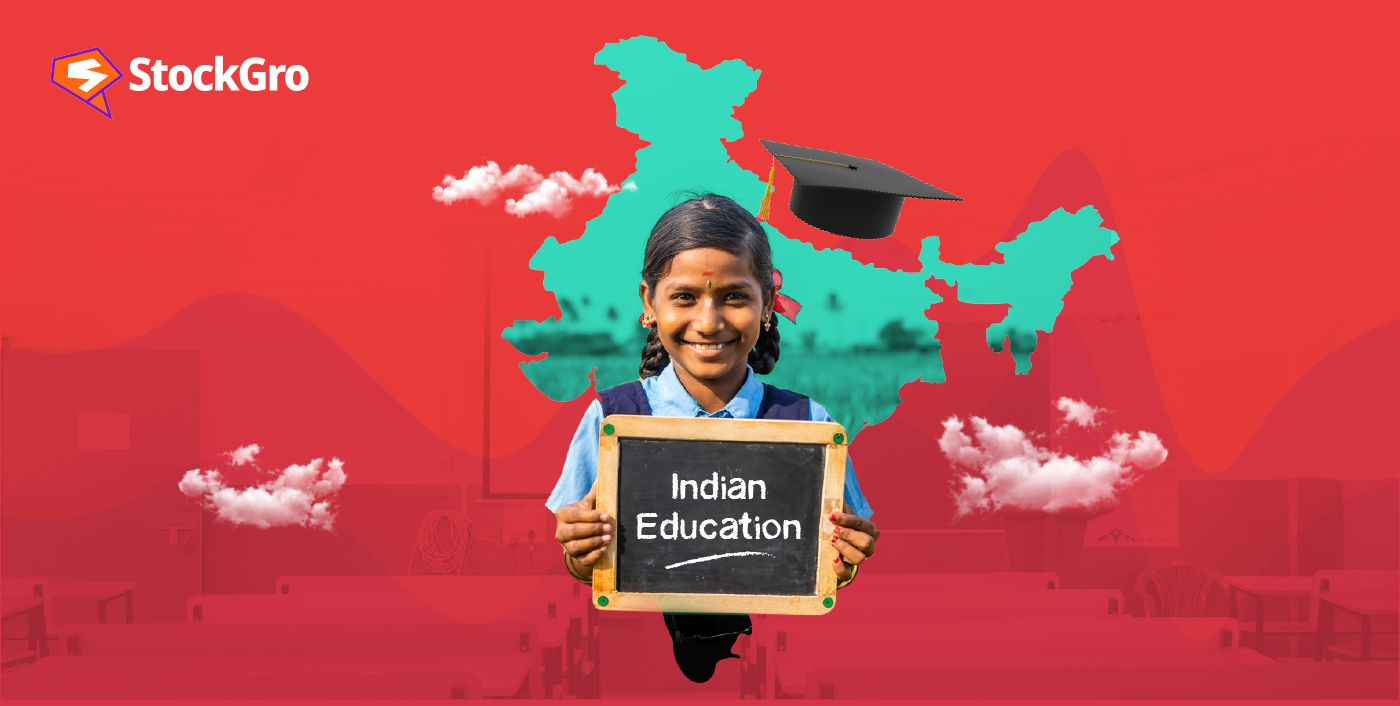
Over its vast and rich history, India has been the site of among the most respected and historic educational establishments in the entire world. The country’s 580 million young adults offer tremendous academic potential, making it the world’s most significant population in this age group.
India now has one of the most extensive education systems in the world, with almost 265 million students, 9.5 million teachers, and around 1.49 million schools. With a large proportion of young people, the most populous country in the world, India, has a significant demographic edge.
Since gaining its independence in 1947, India has made enormous improvements in all aspects of education, as seen through the literacy rate, the expansion of schools and colleges, and more.
In today’s article, we will talk about the education sector a bit more closely, discuss how it has progressed since its independence, and what lies ahead for it. Let’s begin.
What is the education sector in India?
The education sector provides students with the resources they require to be successful in a dynamic economy. The sector is made up of a growing number of organisations that aim to provide people with opportunities for lifelong learning. Public and private educational institutions are all part of the education industry.
As a fundamental right, children in India from the ages of six to fourteen are eligible for free and compulsory education under the Right of Children to Free and Compulsory Education Act, 2009 and other provisions of the Indian Constitution.
Indian education encompasses a wide range of disciplines and levels, from preschool through college and beyond, as well as vocational training. There are a lot of factors that influence the system, including gender, religion, urban/rural location, and more.
Progress of the Indian education sector after independence
By many measures of development, India had fallen behind its peers when it gained independence. Mass education was not a top priority for the British government.
However, since gaining independence in 1947, India has made enormous progress in several educational domains, including elementary education, the expansion of colleges and universities, as well as other areas.
From first through eighth grade, there is no longer a significant gender disparity in the field. There are now 1.02 females for every boy in elementary school (class I through V), a significant increase from the 0.41 girls in the 1950–1951 period. In upper elementary (classes VI through VIII), there are 1.01 females for every boy.
India’s percentage of literate people increased from 18.3% in 1951 to 74.4% in 2018. The most significant shift in literacy was among women, who increased from 8.9% to 65.8% throughout this period.
Increasing public access to educational resources has been a priority for every Indian government since independence. From 1.4 lakh schools in 1957 to 15 lakh in 2020–21, the number of schools has grown by more than 10 times.
Additionally, India today has 42,343 colleges, up from 578 in 1950–51. During the same time, the number of universities increased from 27 to 1,043.
Among the most notable areas that have seen growth is medical education. In the last seventy years, there have been more than 21 times as many medical schools.
Also read: The economics behind the fun Indian toy industry
The growth of the education sector in India
India’s education market is predicted to grow from its current $117 billion valuation to $313 billion by FY 2030. The Indian government has implemented policies such as the Foreign Educational Institutions Bill and the National Accreditation Regulatory Authority Bill for Higher Education.
The amount of equity inflow from Foreign Direct Investment (FDI) into the education industry between April 2000 and March 2023 was US$9.2 billion.
The government has also taken several initiatives, such as the Rashtriya Ucchatar Shiksha Abhiyan, Sarva Shiksha Abhiyan, and the National Education Policy (NEP) 2020, which aim to modernise the Indian education system.
Industry breakdown:
- Preschool education
India’s preschool market is projected to increase by $7.35 billion by 2028, with a compound annual growth rate (CAGR) of 11.2% between 2023 and 2028, based on the country’s 25 million births annually.
- K–12 education
India, with its 1.46 million schools and 230 million kids enrolled in K–12 education (kindergarten to 12th grade), is rapidly progressing. No nation has more school-aged children than India, which has over 250 million. In 2019–20, 38.5 million students in India were enrolled in higher education, of whom 19.6 million were male and 18.9 million were female.
- Higher education
Nearly 45,000 colleges offering bachelor’s degrees, more than a thousand universities, and about 1,500 prestigious institutions make up India’s extensive infrastructure of higher education. As of September 13, 2023, there were 1,196 universities in India, compared to 760 in FY 2015.
- Ed-tech
India is emerging as the global hub for education technology (Ed Tech); of the 36 Ed-Tech unicorns, seven are based in India and were valued at $34.05 billion in June 2022. The size of the Indian ed-tech market is predicted to increase from US$ 700–800 million in 2021 to US$ 30 billion by 2031.
India is now, after the United States, the second-largest e-learning marketplace. In FY22, 155 deals totalling US$3.94 billion were made with Indian ed-tech businesses.
Also read: The Indian space industry: A new frontier for growth and innovation
By the year 2030, India’s educational sector will:
- With the integration of online learning and gaming into training techniques, there’s an expectation of 38% growth in the next 2-4 years.
- Gender, social, and state-based differences in GER (gross enrolment ratio) should be cut down to 5%.
- Spend $140 billion a year on R&D to rank among the top five nations in the world for research output.
- To have more than 20 colleges ranked in the top 200 worldwide.
- With one out of every four college graduates hailing from India, the country has the potential to become the world’s leading supplier of talent.
Also read: Looking into India’s aviation industry: A sky full of possibilities
Top educational stocks to invest in today
That said, here is a list of the best stocks in the education sector in India ranked by market capitalisation on BSE (as of January 4, 2023).
| Company | Market cap (₹ cr.) | Net profit (₹ cr.) | Share price % return (1Y) as of January 4, 2023 |
| Veranda Learning Solutions | 2,005.00 | 6.98 | 10.45 |
| Shanti Educational Initiatives | 1,078.70 | 3.37 | -13.15 |
| CL Educate | 575.62 | 13.31 | 51.96 |
| Career Point | 354.76 | 22.19 | 45.7 |
| Zee Learn | 257.29 | -357.82 | 12.14 |
Conclusion
India has adopted the ideals of the Education 4.0 movement, stressing employment and inclusive learning. In the next few years, India’s education industry will reinvent itself thanks to revolutionary technologies like blockchain, AI, ML, and IoT, which is certainly hopeful for investors.

